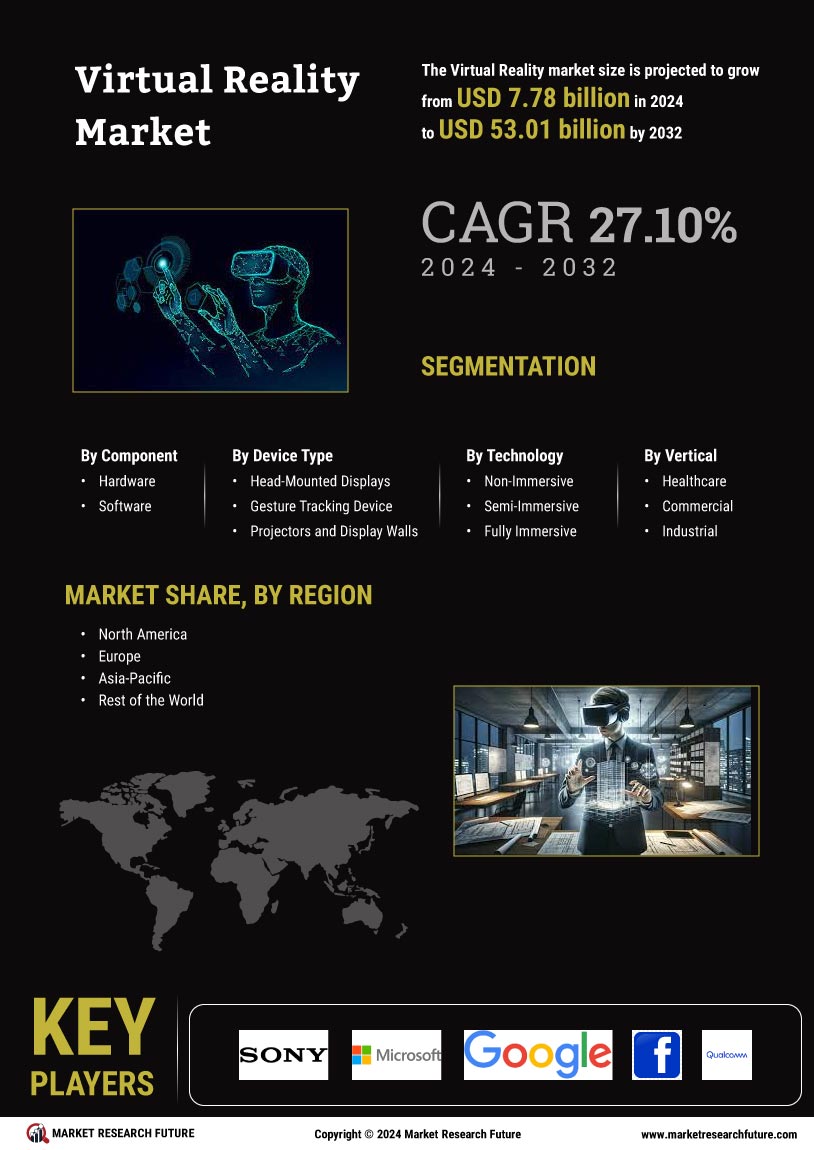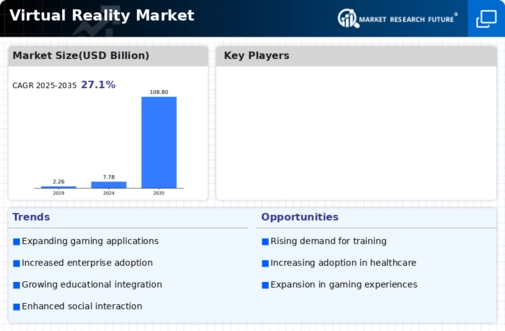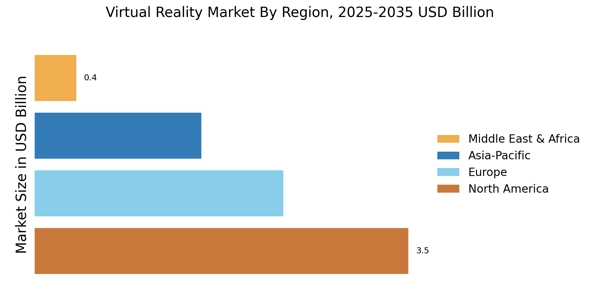Growing Demand for Immersive Experiences
The Virtual Reality Market is witnessing a growing demand for immersive experiences, particularly in entertainment and gaming. Consumers are increasingly seeking out VR experiences that offer a sense of presence and interactivity. This trend is reflected in the rising sales of VR games and experiences, which have seen a substantial increase in revenue. Market data indicates that the gaming segment alone is expected to account for a significant portion of the Virtual Reality Market, with projections suggesting it could reach several billion dollars in the coming years. This demand for immersive content is likely to encourage developers to create more engaging VR applications, further propelling market growth.
Expansion of VR in Healthcare and Therapy
The expansion of Virtual Reality Market technology in healthcare and therapy is emerging as a crucial driver for the Virtual Reality Market. VR is being utilized for pain management, rehabilitation, and mental health therapy, providing patients with immersive environments that can aid in their treatment. For instance, VR exposure therapy has shown promise in treating phobias and PTSD. Market data indicates that the healthcare segment of the Virtual Reality Market is projected to grow significantly, with investments in VR solutions for therapeutic applications increasing. This trend suggests a bright future for VR in healthcare, as more practitioners recognize its potential benefits.
Technological Advancements in VR Hardware
The Virtual Reality Market is experiencing rapid technological advancements in hardware, which significantly enhances user experience. Innovations in headsets, such as improved resolution and field of view, are attracting consumers and businesses alike. For instance, the introduction of lightweight and wireless headsets has made VR more accessible. According to recent data, the VR headset market is projected to grow at a compound annual growth rate of over 30% through the next few years. This surge in hardware capabilities is likely to drive the demand for VR applications across various sectors, including gaming, training, and entertainment, thereby expanding the overall Virtual Reality Market.
Rise of VR in Real Estate and Architecture
The Virtual Reality Market is also being driven by the rise of VR applications in real estate and architecture. Real estate agents and architects are utilizing VR to create virtual tours of properties and designs, allowing potential buyers and clients to experience spaces before they are built or sold. This innovative approach not only enhances customer engagement but also streamlines the decision-making process. Recent data suggests that the use of VR in real estate is expected to grow, with many firms adopting this technology to differentiate themselves in a competitive market. As a result, the Virtual Reality Market is likely to see increased investment and development in this area.
Integration of VR in Training and Simulation
The integration of Virtual Reality Market technology in training and simulation is becoming a pivotal driver for the Virtual Reality Market. Industries such as aviation, military, and healthcare are increasingly adopting VR for training purposes, as it allows for realistic simulations without the associated risks. For example, VR training programs can simulate emergency scenarios for pilots or medical professionals, enhancing their skills in a controlled environment. Market analysis suggests that the training and simulation segment is expected to grow significantly, potentially reaching a multi-billion dollar valuation. This trend indicates a robust future for the Virtual Reality Market as more sectors recognize the benefits of VR in professional training.


















Leave a Comment